- Home
- Toni Morrison
The Source of Self-Regard Page 19
The Source of Self-Regard Read online
Page 19
It is difficult not to be persuaded by the weight of documentation Martin Bernal brings to his task and his rather dazzling analytical insights. What struck me in his analysis were the process of the fabrication of Ancient Greece and the motives for the fabrication. The latter (motive) involved the concept of purity, of progress. The former (process) required misreading, predetermined selectivity of authentic sources, and—silence. From the Christian theological appropriation of Israel (the Levant), to the early nineteenth-century work of the prodigious Karl Müller, work that effectively dismissed the Greeks’ own record of their influences and origins as their “Egyptomania,” their tendency to be “wonderstruck” by Egyptian culture, a tendency “manifested in the ‘delusion’ that Egyptians and other non-European ‘barbarians’ had possessed superior cultures, from which the Greeks had borrowed massively,”6 on through the Romantic response to the Enlightenment, and the decline into disfavor of the Phoenicians, “the essential force behind the rejection of the tradition of massive Phoenician influence on early Greece was the rise of racial—as opposed to religious—anti-Semitism. This was because the Phoenicians were correctly perceived to have been culturally very close to the Jews.”7
I have quoted at perhaps too great a length from Bernal’s text because motive, so seldom an element brought to bear on the history of history, is located, delineated, and confronted in Bernal’s research and has helped my own thinking about the process and motives of scholarly attention to and an appraisal of Afro-American presence in the literature of the United States.
Canon building is empire building. Canon defense is national defense. Canon debate, whatever the terrain, nature, and range (of criticism, of history, of the history of knowledge, of the definition of language, the universality of aesthetic principles, the sociology of art, the humanistic imagination), is the clash of cultures. And all of the interests are vested.
In such a melee as this one—a provocative, healthy, explosive melee—extraordinarily profound work is being done. Some of the controversy, however, has degenerated into ad hominem and unwarranted speculation on the personal habits of artists, specious and silly arguments about politics (the destabilizing forces are dismissed as merely political; the status quo sees itself as not—as though the term “apolitical” were only its prefix and not the most obviously political stance imaginable since one of the functions of political ideology is to pass itself off as immutable, natural, and “innocent”), and covert expressions of critical inquiry designed to neutralize and disguise the political interests of the discourse. Yet much of the research and analysis has rendered speakable what was formerly unspoken and has made humanistic studies, once again, the place where one has to go to find out what’s going on. Cultures, whether silenced or monologistic, whether repressed or repressing, seek meaning in the language and images available to them.
Silences are being broken, lost things have been found, and at least two generations of scholars are disentangling received knowledge from the apparatus of control, most notably those who are engaged in investigations of French and British colonialist literature, American slave narratives, and the delineation of the Afro-American literary tradition.
Now that Afro-American artistic presence has been “discovered” actually to exist, now that serious scholarship has moved from silencing the witnesses and erasing their meaningful place in and contribution to American culture, it is no longer acceptable merely to imagine us and imagine for us. We have always been imagining ourselves. We are not Isak Dinesen’s “aspects of nature,” nor Conrad’s unspeaking. We are the subjects of our own narrative, witnesses to and participants in our own experience, and, in no way coincidentally, in the experience of those with whom we have come in contact. We are not, in fact, “Other.” We are choices. And to read imaginative literature by and about us is to choose to examine centers of the self and to have the opportunity to compare these centers with the “raceless” one with which we are, all of us, most familiar.
II
Recent approaches to the reading of Afro-American literature have come some distance; have addressed those arguments, mentioned earlier (which are not arguments, but attitudes), that have, since the seventeenth century, effectively silenced the autonomy of that literature. As for the charge that “there is no Afro-American art,” contemporary critical analysis of the literature and the recent surge of reprints and rediscoveries have buried it, and are pressing on to expand the traditional canon to include classic Afro-American works where generically and chronologically appropriate, and to devise strategies for reading and thinking about these texts.
As to the second silencing charge, “Afro-American art exists, but is inferior,” again, close readings and careful research into the culture out of which the art is born have addressed and still address the labels that once passed for stringent analysis but can no more: that it is imitative, excessive, sensational, mimetic (merely), and unintellectual, though very often “moving,” “passionate,” “naturalistic,” “realistic,” or sociologically “revealing.” These labels may be construed as compliments or pejoratives and if valid, and shown as such, so much the better. More often than not, however, they are the lazy, easy, brand-name applications when the hard work of analysis is deemed too hard, or when the critic does not have access to the scope the work demands. Strategies designed to counter this lazy labeling include the application of recent literary theories to Afro-American literature so that noncanonical texts can be incorporated into existing and forming critical discourse.
The third charge, that “Afro-American art exists, but is superior only when it measures up to the ‘universal’ criteria of Western art,” produces the most seductive form of analysis, for both writer and critic, because comparisons are a major form of knowledge and flattery. The risks, nevertheless, are twofold: (1) the gathering of a culture’s difference into the skirts of the queen is a neutralization designed and constituted to elevate and maintain hegemony, (2) circumscribing and limiting the literature to a mere reaction to or denial of the queen, judging the work solely in terms of its referents to Eurocentric criteria, or its sociological accuracy, political correctness, or its pretense of having no politics at all, cripple the literature and infantilize the serious work of imaginative writing. This response-oriented concept of Afro-American literature contains the seeds of the next (fourth) charge: that when Afro-American art is worthy, it is because it is “raw” and “rich,” like ore, and like ore needs refining by Western intelligences. Finding or imposing Western influences in/on Afro-American literature has value, but when its sole purpose is to place value only where that influence is located it is pernicious.
My unease stems from the possible, probable consequences these approaches may have upon the work itself. They can lead to an incipient orphanization of the work in order to issue its adoption papers. They can confine the discourse to the advocacy of diversification within the canon and/or a kind of benign coexistence near or within reach of the already sacred texts. Either of these two positions can quickly become another kind of silencing if permitted to ignore the indigenous created qualities of the writing. So many questions surface and irritate. What have these critiques made of the work’s own canvas? Its paint, its frame, its framelessness, its spaces? Another list of approved subjects? Of approved treatments? More self-censoring, more exclusion of the specificity of the culture, the gender, the language? Is there perhaps an alternative utility in these studies? To advance power or locate its fissures? To oppose elitist interests in order to enthrone egalitarian effacement? Or is it merely to rank and grade the readable product as distinct from the writeable production? Can this criticism reveal ways in which the author combats and confronts received prejudices and even creates other terms in which to rethink one’s attachment to or intolerance of the material of these works? What is important in all of this is that the critic not be engaged in laying claim on behalf of the text to his or her o
wn dominance and power. Nor to exchange his or her professional anxieties for the imagined turbulence of the text. As has been said before, “the text should become a problem of passion, not a pretext for it.”
There are at least three focuses that seem to me to be neither reactionary nor simple pluralism, nor the even simpler methods by which the study of Afro-American literature remains the helpful doorman into the halls of sociology. Each of them, however, requires wakefulness.
One is the development of a theory of literature that truly accommodates Afro-American literature: one that is based on its culture, its history, and the artistic strategies the works employ to negotiate the world it inhabits.
Another is the examination and reinterpretation of the American canon, the founding nineteenth-century works, for the “unspeakable things unspoken”; for the ways in which the presence of Afro-Americans has shaped the choices, the language, the structure—the meaning of so much American literature. A search, in other words, for the ghost in the machine.
A third is the examination of contemporary and/or noncanonical literature for this presence, regardless of its category as mainstream, minority, or what you will. I am always amazed by the resonances, the structural gear-shifts, and the uses to which Afro-American narratives, persona, and idiom are put in contemporary “white” literature. And in Afro-American literature itself the question of difference, of essence, is critical. What makes a work “black”? The most valuable point of entry into the question of cultural (or racial) distinction, the one most fraught, is its language—its unpoliced, seditious, confrontational, manipulative, inventive, disruptive, masked, and unmasking language. Such a penetration will entail the most careful study, one in which the impact of Afro-American presence on modernity becomes clear and is no longer a well-kept secret.
I would like to touch, for just a moment, on focuses two and three. We can agree, I think, that invisible things are not necessarily “not-there”; that a void may be empty, but is not a vacuum. In addition, certain absences are so stressed, so ornate, so planned, they call attention to themselves, arrest us with intentionality and purpose, like neighborhoods that are defined by the population held away from them. Looking at the scope of American literature, I can’t help thinking that the question should never have been “Why am I, an Afro-American, absent from it?” It is not a particularly interesting query anyway. The spectacularly interesting question is “What intellectual feats had to be performed by the author or his critic to erase me from a society seething with my presence, and what effect has that performance had on the work?” What are the strategies of escape from knowledge? Of willful oblivion? I am not recommending an inquiry into the obvious impulse that overtakes a soldier sitting in a World War I trench to think of salmon fishing. That kind of pointed “turning from,” deliberate escapism, or transcendence may be lifesaving in a circumstance of immediate duress. The exploration I am suggesting is, how does one sit in the audience observing, watching the performance of Young America, in 1915 say, and reconstruct the play, its director, its plot, and its cast in such a manner that its very point never surfaces? Not why. How? Ten years after Tocqueville’s prediction in 1840 that “ ‘finding no stuff for the ideal in what is real and true, poets’ would flee to imaginary regions,”8 in 1850 at the height of slavery and burgeoning abolitionism, American writers chose romance. Where, I wonder, in these romances is the shadow of the presence from which the text has fled? Where does it heighten, where does it dislocate, where does it necessitate novelistic invention; what does it release; what does it hobble?
The device (or arsenal) that serves the purpose of flight can be Romanticism versus verisimilitude; New Criticism versus shabbily disguised and questionably sanctioned “moral uplift”; the “complex series of evasions” that is sometimes believed to be the essence of modernism; the perception of the “evolution of art”; the cultivation of irony, parody; the nostalgia for “literary language”; the rhetorically unconstrained textuality versus socially anchored textuality, and the undoing of textuality altogether. These critical strategies can (but need not) be put into service to reconstruct the historical world to suit specific cultural and political purposes. Many of these strategies have produced powerfully creative work. Whatever uses to which romanticism is put, however suspicious its origins, it has produced an incontestably wonderful body of work. In other instances these strategies have succeeded in paralyzing both the work and its criticism. In still others they have led to a virtual infantilization of the writer’s intellect, his sensibility, his craft. They have reduced the meditations on theory into a “power struggle among sects” reading unauthored and unauthorable material, rather than reading with the author the text that both construct.
In other words, the critical process has made wonderful work of some wonderful work, and recently the means of access to the old debates have altered. The problem now is putting the question. Is the nineteenth-century flight from blackness, for example, successful in mainstream American literature? Beautiful? Artistically problematic? Is the text sabotaged by its own proclamations of “universality”? Are there ghosts in the machine? Active but unsummoned presences that can distort the workings of the machine and can also make it work? These kinds of questions have been consistently put by critics of colonial literature vis-à-vis Africa and India and other third-world countries. American literature would benefit from similar critiques. I am made melancholy when I consider that the act of defending the Eurocentric Western posture in literature as not only “universal” but also “race-free” may have resulted in lobotomizing that literature, and in diminishing both the art and the artist. Like the surgical removal of legs so that the body can remain enthroned, immobile, static—under house arrest, so to speak. It may be, of course, that contemporary writers deliberately exclude from their conscious writerly world the subjective appraisal of groups perceived as “Other,” and white male writers frequently abjure and deny the excitement of framing or locating their literature in the political world. Nineteenth-century writers, however, would never have given it a thought. Mainstream writers in young America understood their competition to be national, cultural, but only in relationship to the Old World, certainly not vis-à-vis an ancient race (whether Native American or African) that was stripped of articulateness and intellectual thought, rendered, in D. H. Lawrence’s term, “uncreate.” For these early American writers, how could there be competition with nations or peoples who were presumed unable to handle or uninterested in handling the written word? One could write about them, but there was never the danger of their “writing back.” Just as one could speak to them without fear of their “talking back.” One could even observe them, hold them in prolonged gaze, without encountering the risk of being observed, viewed, or judged in return. And if, on occasion, they were themselves viewed and judged, it was out of a political necessity and, for the purposes of art, could not matter. Or so thought young America. It could never have occurred to Edgar Allan Poe in 1848 that I, for example, might read “The Gold-Bug” and watch his efforts to render my grandfather’s speech to something as close to braying as possible, an effort so intense you can see the perspiration—and the stupidity—when Jupiter says, “I knows,” and Mr. Poe spells the verb “nose.”*
Yet in spite or because of this monologism there is a great, ornamental, prescribed absence in early American literature and, I submit, it is instructive. It only seems that the canon of American literature is “naturally” or “inevitably” “white.” In fact it is studiously so. In fact these absences of vital presences in young American literature may be the insistent fruit of the scholarship rather than the text. Perhaps some of these writers, although under current house arrest, have much more to say than has been realized. Perhaps some were not so much transcending politics, or escaping blackness, as they were transforming it into intelligible, accessible, yet artistic modes of discourse. To ignore this possibility by never questioni
ng the strategies of transformation is to disenfranchise the writer, diminish the text, and render the bulk of the literature aesthetically and historically incoherent—an exorbitant price for cultural (white male) purity, and, I believe, a spendthrift one. The reexamination of founding literature of the United States for the unspeakable unspoken may reveal those texts to have deeper and other meanings, deeper and other power, deeper and other significances.

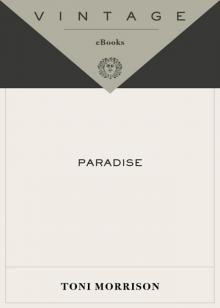 Paradise
Paradise Beloved
Beloved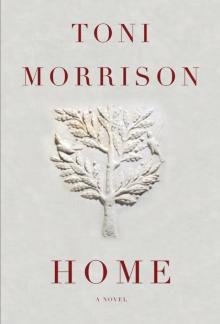 Home
Home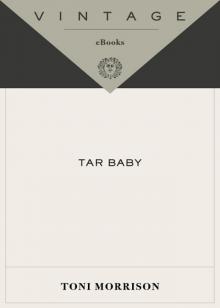 Tar Baby
Tar Baby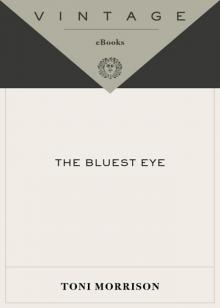 The Bluest Eye
The Bluest Eye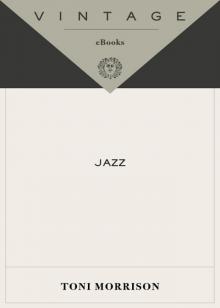 Jazz
Jazz Love
Love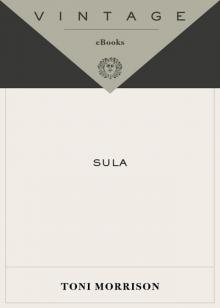 Sula
Sula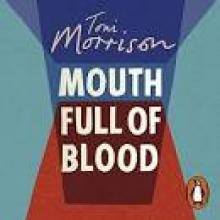 Mouth Full of Blood
Mouth Full of Blood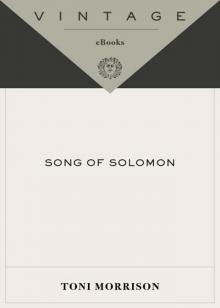 Song of Solomon
Song of Solomon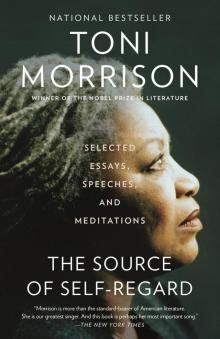 The Source of Self-Regard
The Source of Self-Regard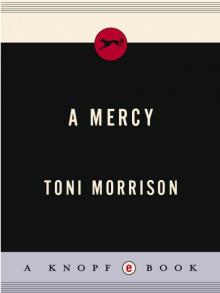 A Mercy
A Mercy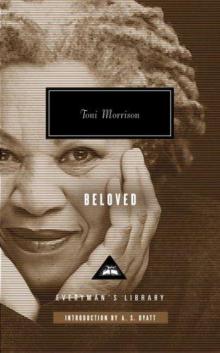 Beloved_a novel
Beloved_a novel